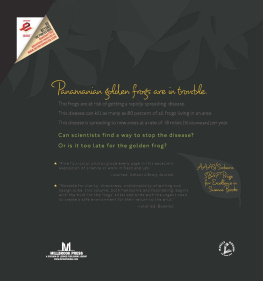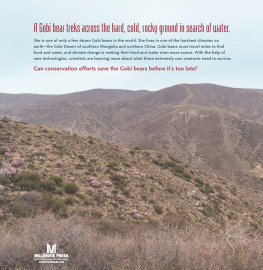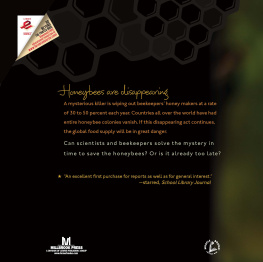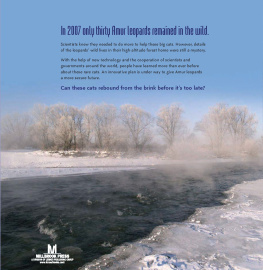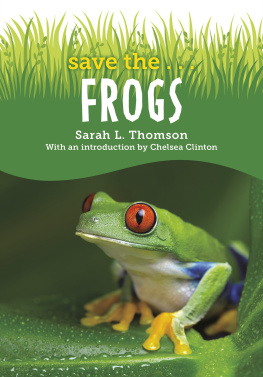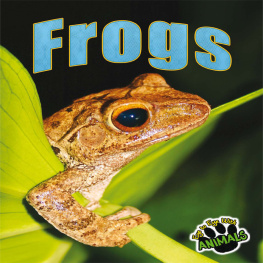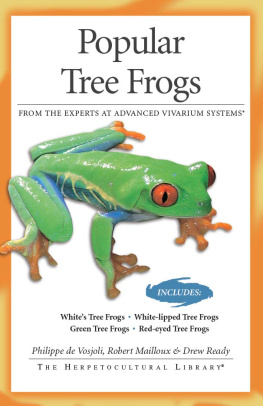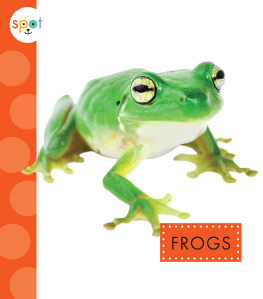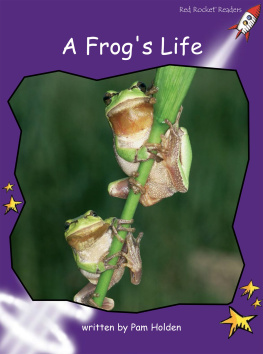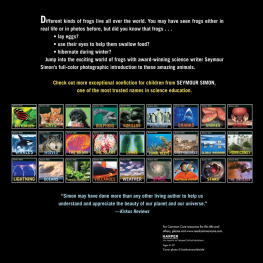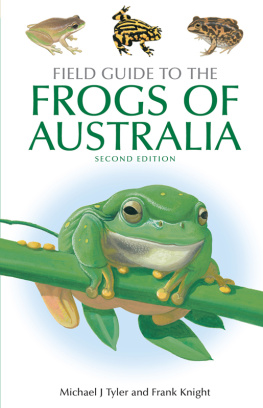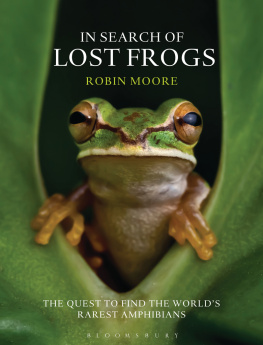DartangnonITCStd
JohnstonITCStd-Light
JohnstonITCStd-Medium
DartangnonITCStd
JohnstonITCStd-Light
JohnstonITCStd-Medium
DartangnonITCStd
JohnstonITCStd-Light
JohnstonITCStd-Medium
DartangnonITCStd
JohnstonITCStd-Light
JohnstonITCStd-Medium
With love for
Jeff and Jill Hay
Acknowledgments: The author would like to thank the following people for
taking the time to share their expertise: Forrest Brem, University of Memphis,
Memphis, Tennessee; Dr. Brian Gratwicke, Society for Conservation Biology,
Washington, D.C.; Edgardo Griffith, El Valle Amphibian Conservation Center, Panama and
Houston Zoo; Dr. Reid Harris, James Madison University, Harrisonburg, Virginia; Dr. Karen
Lips, University of Maryland, College Park, Maryland; Dr. Joyce Longcore, University of Maine,
Orono, Maine; Dr. Joe Mendelson, Zoo Atlanta, Atlanta, Georgia; Dr. Russell Poulter, University
of Otago, New Zealand; Dr. Jamie Voyles, James Cook University, Australia; Dr. Kevin Zippel,
Amphibian Ark, Apple Valley, Minnesota. A special thank-you to Skip Jeffery for his loving support
during the creative process. A special thank you to Dr. Karen Lips for supplying the information for
the map (on page 28) projecting the spread of Bd throughout Panama.
Text copyright 2012 by Sandra Markle
All rights reserved. International copyright secured. No part of this book may be reproduced, stored in
a retrieval system, or transmitted in any form or by any meanselectronic, mechanical, photocopying,
recording, or otherwisewithout the prior written permission of Lerner Publishing Group, Inc., except for
the inclusion of brief quotations in an acknowledged review.
Main body text set in Johnston ITC Std. 14/21.
Typeface provided by International Typeface Corp.
Millbrook Press
A division of Lerner Publishing Group, Inc.
241 First Avenue North
Minneapolis, MN 55401 U.S.A.
Website address: www.lernerbooks.com
Library of Congress Cataloging-in-Publication Data
Markle, Sandra.
The case of the vanishing golden frogs: a scientific mystery / by Sandra Markle.
p. cm.
Includes bibliographical references and index.
ISBN: 9780761351085 (lib. bdg. : alk. paper)
ISBN: 9780761379836 (eBook)
ISBN: 9781467759250 (Audisee ISBN)
1. Panamanian golden frogJuvenile literature. 2. FrogsInfectionsJuvenile literature.
3. Batrachochytrium dendrobatidisJuvenile literature. I. Title.
QL668.E22M37 2012
597.8'7dc22 2010042642
Manufactured in the United States of America
4 PC 9/1/13
DartangnonITCStd
JohnstonITCStd-Light
JohnstonITCStd-Medium
Table of
Contents
DartangnonITCStd
JohnstonITCStd-Light
JohnstonITCStd-Medium
Its a Mystery
High in the mountain forest close to El Valle de
Antn, Panama, frog researcher Edgardo Griffith finds
something exciting.
Its a Panamanian golden frog. In
the mid-1990s, finding a golden
frog in this forest would have
been nothing unusual. In fact,
the forest was so full of all kinds
of frogs, it was noisy with frog
voices. However, the world has
changedat least as far as being a
safe place for frogs. Everywhere,
different kinds of frogs are dying.
Theyre becoming extinct, or gone
forever.
Its sad to lose animals from
the world, but the decreasing
number of frogs causes another
big problem. Frogs eat lots of
Edgardo Griffith
holds a Panamanian
golden frog. Full-grown
frogs are just 1.5 inches
(3.8 centimeters) long.
DartangnonITCStd
JohnstonITCStd-Light
JohnstonITCStd-Medium
insects. Some of these insects are pests that spread diseases and damage
crops that people and animals need for food. And in Panama, the golden
frog is treasured. Just as the bald eagle is the symbol of the United States,
the golden frog is one of Panamas national symbols.
Golden frogs have always been important in Panama. In ancient times,
people created golden statues of the frogs to bury with their dead. They
believed the frogs would give their loved ones good luck in the afterlife.
Modern Panamanians still keep statues of golden frogs in their homes for
good luck. They dont want their national symbol to disappear forever.
These golden frog statues are
being sold in an open-air
market in El Valle de
Antn, Panama.
DartangnonITCStd
JohnstonITCStd-Light
JohnstonITCStd-Medium
Frogs in Trouble!
Scientists first
realized that
golden frogs were
vanishing in 1996.
That year biologist Karen
Lips went to Panama. She
visited the cool, misty,
high mountain forest of
Fortuna Forest Reserve
in Chiriqui Province. She
had been studying the
frogs living there. When
Lips visited that area for
the first time, in 1992, the
forest was full of many
kinds of frogs. Each time
Lips took a step, frogs
hopped out of her way.
When she returned in
1996, the forest seemed
When Karen Lips first
went to study Panamanian
golden frogs in 1992, they
were easy to find.
DartangnonITCStd
JohnstonITCStd-Light
JohnstonITCStd-Medium
quiet. She heard few frog voices. Worse, when Lips started searching for
frogs, most of the ones she found were dead. She collected the bodies,
and soon had fifty of them. Finding so many dead frogs was surprising. In
the damp forest, a dead frog quickly decomposes (rots and breaks down).
Or its eaten by other
animals, such as wasps.
So finding lots of dead
frogs meant that the
frogs must have died
very recently.
The deaths
reminded Lips of what
had happened a few
years earlier just 60
miles (100 kilometers)
to the west. There, in
Las Tablas, Costa Rica,
shed discovered seven
dead frogs. She hadnt
thought much of that
then. But when she
returned to Las Tablas
a year later, she found
no frogs at all.
Wasps are among
the many scavengers
that eat dead frogs.
DartangnonITCStd
JohnstonITCStd-Light
JohnstonITCStd-Medium

